Journal Description
Journal of Functional Morphology and Kinesiology
Journal of Functional Morphology and Kinesiology
is a peer-reviewed, open access journal on functional morphology and kinesiology research dealing with the analysis of structure, function, development, and evolution of cells and tissues of the musculoskeletal system and the whole body related to the movement exercise-based approach, published quarterly online by MDPI.
- Open Access— free for readers, with article processing charges (APC) paid by authors or their institutions.
- High Visibility: indexed within ESCI (Web of Science), Scopus, PubMed, PMC, FSTA, and other databases.
- Journal Rank: JCR - Q1 (Sport Sciences) / CiteScore - Q2 (Physical Therapy, Sports Therapy and Rehabilitation)
- Rapid Publication: manuscripts are peer-reviewed and a first decision is provided to authors approximately 19.7 days after submission; acceptance to publication is undertaken in 1.9 days (median values for papers published in this journal in the second half of 2024).
- Recognition of Reviewers: reviewers who provide timely, thorough peer-review reports receive vouchers entitling them to a discount on the APC of their next publication in any MDPI journal, in appreciation of the work done.
Impact Factor:
2.6 (2023)
Latest Articles
The Effect of Peak Height Velocity on Strength and Power Development of Young Athletes: A Scoping Review
J. Funct. Morphol. Kinesiol. 2025, 10(2), 168; https://doi.org/10.3390/jfmk10020168 (registering DOI) - 10 May 2025
Abstract
Background: Maturation is a complex biological process affecting all tissues, organs, and systems, particularly during adolescence. The Peak Height Velocity (PHV) period, a hallmark of adolescent growth spurts, is associated with individual differentiations in the development of performance attributes amongst youth. Understanding
[...] Read more.
Background: Maturation is a complex biological process affecting all tissues, organs, and systems, particularly during adolescence. The Peak Height Velocity (PHV) period, a hallmark of adolescent growth spurts, is associated with individual differentiations in the development of performance attributes amongst youth. Understanding the influence of sports participation on strength and power during the PHV period is essential for optimizing training outcomes and reducing injury risk. This scoping review synthesizes the literature on the strength and power development in athletes during the PHV period across various sports, highlighting the interaction between maturation, training, and performance outcomes. Methods: A systematic search of PubMed and Scopus, supplemented by manual searches, identified peer-reviewed studies from 2004 to 2025. The included longitudinal studies involved structured training and assessed strength-related performance during and around the PHV period. PRISMA-ScR guidelines were followed. Results: Twelve studies met the inclusion criteria. It is found that strength and power are significantly affected during the PHV period and participation in sports mitigates these effects. Training characteristics such as training frequency/volume and sport specificity were key factors. Early maturers often outperformed late maturers, though adolescent awkwardness temporarily reduced performance around PHV. Conclusions: Systematic participation in sports training can limit the phenomenon of adolescent awkwardness in the performance of strength and power. Hence, training programs should be tailored to maturity status, emphasizing skill development, strength training, and injury prevention. Future research should explore individualized training and the mechanisms underlying performance variability during the PHV period.
Full article
(This article belongs to the Special Issue Optimizing Performance: Training Strategies to Improve Strength, Speed, and Power)
►
Show Figures
Open AccessArticle
Effects of Superimposed Blood Flow Restriction on Isokinetic Knee Extension
by
Darío Rodrigo-Mallorca, Joaquín Mollá-Sanchis, Iván Chulvi-Medrano and Luis M. Franco-Grau
J. Funct. Morphol. Kinesiol. 2025, 10(2), 167; https://doi.org/10.3390/jfmk10020167 (registering DOI) - 10 May 2025
Abstract
Objective: To evaluate changes in the isokinetic concentric moment of the knee extensors and the moment–velocity curve during the application of no BFR compared to superimposed BFR. Methods: A total of 37 physically active adults [33.73 (10.96) years; 11 females] performed three sets
[...] Read more.
Objective: To evaluate changes in the isokinetic concentric moment of the knee extensors and the moment–velocity curve during the application of no BFR compared to superimposed BFR. Methods: A total of 37 physically active adults [33.73 (10.96) years; 11 females] performed three sets of isokinetic concentric knee extensions, each including three angular velocities (300°/s, 210°/s, and 120°/s; BIODEX dynamometer). BFR at 40% (BFR40) and 80% (BFR80) of the maximal pressure occlusion (MPO) were applied randomly after an equal control protocol without BFR (BFR0). Results: No significant differences were found for any interaction between the BFR condition and angular velocity (p > 0.05); 109.78 ± 32.90 vs. 71.24 ± 11.18, 116.68 ± 27.29 vs. 74.40 ± 15.11, and 113.91 ± 28.43 vs. 72.95 ± 13.76 Nm at 300°/s; 137.60 ± 35.27 vs. 88.85 ± 15.23, 135.40 ± 33.04 vs. 86.32 ± 17.38, and 132.68 ± 31.99 vs. 85.39 ± 16.25 Nm at 210°/s; 177.62 ± 41.40 vs. 114.72 ± 20.10, 166.40 ± 45.39 vs. 198.14 ± 21.80, and 162.60 ± 40.10 vs. 109.09 ± 18.90 Nm at 120°/s, for BFR0, BFR40, and BFR80, respectively. There were significant differences in the interactions by gender. Conclusions: Superimposed application of BFR at 40% MPO and 80% MPO during an isokinetic knee extension did not cause any acute change in the ability to produce maximal moment or power. The use of BFR may not generate an ergogenic effect that is sufficient to cause acute changes in force production.
Full article
(This article belongs to the Special Issue Sports Medicine and Public Health)
►▼
Show Figures
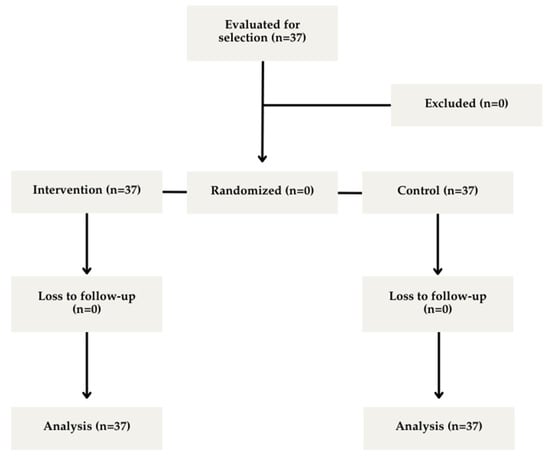
Figure 1
Open AccessBrief Report
Oxidative Stress Modulation and Glutathione System Response During a 10-Day Multi-Stressor Field Training
by
Liāna Pļaviņa and Edgars Edelmers
J. Funct. Morphol. Kinesiol. 2025, 10(2), 166; https://doi.org/10.3390/jfmk10020166 (registering DOI) - 10 May 2025
Abstract
Objectives: To evaluate how a 10-day multi-stressor field-training course—combining high physical and psycho-emotional demands, caloric restriction, and severe sleep deprivation—affects systemic oxidative/antioxidative status and biomarkers of nucleic-acid and skeletal-muscle damage in trained military cadets. Methods: Seventy-five healthy cadets (8 women, 67 men; 22–34
[...] Read more.
Objectives: To evaluate how a 10-day multi-stressor field-training course—combining high physical and psycho-emotional demands, caloric restriction, and severe sleep deprivation—affects systemic oxidative/antioxidative status and biomarkers of nucleic-acid and skeletal-muscle damage in trained military cadets. Methods: Seventy-five healthy cadets (8 women, 67 men; 22–34 y) completed the course. Standardised operational rations (700–800 kcal day−¹) and two 20 min tactical naps per 24 h were enforced. Pre- and post-course venous blood was collected after an overnight fast. Plasma superoxide-dismutase activity (SOD), reduced and oxidised glutathione (GSH, GSSG), malondialdehyde (MDA), and hydrogen peroxide (H₂O₂) were quantified by colourimetric/fluorometric assays; 8-hydroxy-2-deoxyguanosine (8-OHdG) and myoglobin were measured by ELISA. The oxidative-stress index (OSI) was calculated as GSSG·GSH−¹. Within-subject differences were assessed with Wilcoxon signed-rank tests; associations between biomarker changes were explored by Spearman correlation. Results: After training, GSH (+175%, p < 0.001) and GSSG (+32%, p < 0.001) rose significantly, whereas SOD (−19%, p = 0.002), H₂O₂ (−20%, p = 0.015), MDA (−50%, p < 0.001), 8-OHdG (−23%, p < 0.001), and OSI (−47%, p < 0.001) declined. Myoglobin remained unchanged (p = 0.603). Reductions in MDA correlated inversely with increases in GSSG (rₛ = −0.25, p = 0.041), while H₂O₂ changes correlated positively with GSSG (rₛ = 0.25, p = 0.046), indicating a glutathione-driven adaptive response. Conclusions: Ten consecutive days of vigorous, calorie- and sleep-restricted field training elicited a favourable redox adaptation characterised by enhanced glutathione-mediated antioxidant capacity and lower circulating oxidant concentrations, without evidence of DNA or skeletal-muscle damage. The data suggest that, in physically prepared individuals, prolonged multi-stressor exposure can strengthen endogenous antioxidant defences rather than precipitate oxidative injury.
Full article
(This article belongs to the Special Issue Understanding Sports-Related Health Issues, 2nd Edition)
►▼
Show Figures
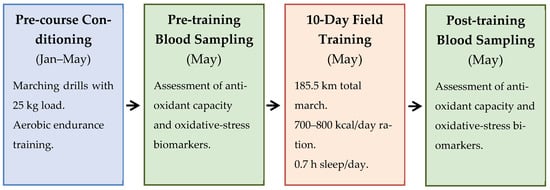
Figure 1
Open AccessArticle
Body Composition Benefits Diminish One Year After a Resistance Training Regimen in Breast Cancer Patients, Although Improvements in Strength, Balance, and Mobility Persist
by
Colin E. Champ, Jared Rosenberg, Chris Peluso, Christie Hilton, Rhyeli Krause, Alexander K. Diaz and David J. Carpenter
J. Funct. Morphol. Kinesiol. 2025, 10(2), 165; https://doi.org/10.3390/jfmk10020165 - 9 May 2025
Abstract
Objectives: Resistance training can improve body composition and physical function during and after breast cancer treatment and improve quality of life. It is unclear whether these changes persist once a person is no longer actively enrolled in a structured exercise regimen. Thus, we
[...] Read more.
Objectives: Resistance training can improve body composition and physical function during and after breast cancer treatment and improve quality of life. It is unclear whether these changes persist once a person is no longer actively enrolled in a structured exercise regimen. Thus, we analyzed participants from the EXERT-BC protocol, assessing an intense exercise regimen in women with breast cancer at one year. Methods: All the participants were asked to undergo reassessment at one year. Current exercise habits, injuries, changes in medical history, body composition, handgrip strength, functional mobility and balance, and patient-reported quality of life were assessed. Pairwise comparison was performed via the paired t test. Results: Out of 40 initial participants, 33 returned for reevaluation, with 6 lost to follow-up and 1 with unrelated hospitalization. The median age was 57.8 years, and stage at diagnosis was 1. Weekly exercise was reported by 16 participants (48.5%), with 14 of the 16 following structured resistance training. Between completion of the EXERT-BC and one year follow-up, five women (15.2%) experienced musculoskeletal injuries, which inhibited their ability to exercise. Three women (9%), who were no longer exercising experienced orthopedic injuries requiring medical intervention. The significant reduction in percent body fat, total body fat, excess fat, and increases in muscle mass, resting metabolic rate, and whole-body phase angle dissipated at 1 year. Activity levels and quality of life were no longer significantly improved. However, strength, mobility, and balance remained significantly improved versus pre-exercise measurements, whether a participant was still engaged in exercise or not. Conclusion: After a 3-month dose-escalated resistance training regimen, exercise compliance was poor at one year. The anthropomorphic benefits of the regimen regressed by one year; however, the improvements in strength, balance, and mobility persisted.
Full article
(This article belongs to the Special Issue Acute and Chronic Changes in Muscle Architecture, Performance, and Body Composition Following Resistance Exercise in Different Populations)
►▼
Show Figures

Figure 1
Open AccessArticle
Physical Activity Levels and Recreational Participation Among Physiotherapists: A Cross-Sectional Correlational Study
by
Constantin Ciucurel, George Mihail Man, Marilena Monica Tantu, Mariana Ionela Tudor, Georgeta Ionescu, Ana Catalina Tantu and Elena Ioana Iconaru
J. Funct. Morphol. Kinesiol. 2025, 10(2), 164; https://doi.org/10.3390/jfmk10020164 - 7 May 2025
Abstract
Background/Objectives: Healthcare professions impose high physical and mental demands, potentially affecting health. Despite advocating for active lifestyles, many physiotherapists do not meet recommended physical activity levels (PALs). This study explores physical activity patterns and recreational engagement among practicing physiotherapists. Methods: A cross-sectional correlational
[...] Read more.
Background/Objectives: Healthcare professions impose high physical and mental demands, potentially affecting health. Despite advocating for active lifestyles, many physiotherapists do not meet recommended physical activity levels (PALs). This study explores physical activity patterns and recreational engagement among practicing physiotherapists. Methods: A cross-sectional correlational design examined the relationship between physical activity and recreational participation among 60 physiotherapists (38 females, 22 males, mean age 38.62 ± 9.78 years). Data were collected using the International Physical Activity Questionnaire—Short Form (IPAQ-SF) and the Pittsburgh Enjoyable Activities Test (PEAT). The analysis focused on bivariate correlations between PAL, energy expenditure (MET), recreational habits (PEAT score), and sociodemographic and anthropometric variables. Results: The IPAQ-SF results indicated that 38.3% of participants had a low PAL, 40.0% a moderate level, and 21.7% a high level. Average energy expenditure was 1927.62 ± 1479.73 MET-minutes/week. PEAT data indicated moderate engagement in recreational activities (mean score: 22.63 ± 7.76), with participants predominantly involved in low-intensity, passive leisure. Significant positive correlations were observed between PEAT scores and both MET values (Kendall’s tau-b = 0.669, p ≤ 0.01) and PALs (Kendall’s tau-b = 0.804, p ≤ 0.01), indicating that higher engagement in recreational activities is associated with greater energy expenditure and overall physical activity levels. Conclusions: Despite the physical demands of their profession, many physiotherapists report low activity levels. The positive correlations between physical activity, energy expenditure, and recreational engagement highlight the need for structured exercise to support both personal health and professional integrity. Future research should include larger samples and objective assessments.
Full article
(This article belongs to the Section Physical Exercise for Health Promotion)
►▼
Show Figures
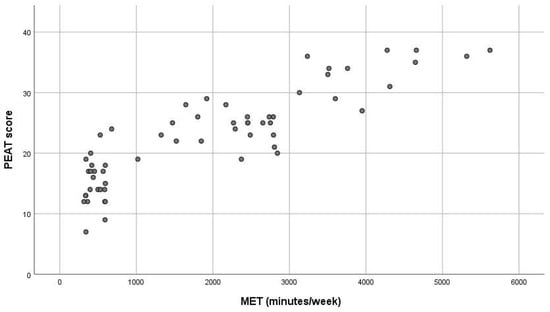
Figure 1
Open AccessArticle
The Impact of a Multidimensional Physical Activity Intervention on Glycemic Control in Type 1 Diabetes: A Preliminary Study
by
Olga Papale, Emanuel Festino, Francesca Di Rocco, Carl Foster, Iris Prestanti, Sofia Serafini, Pascal Izzicupo, Cristina Cortis and Andrea Fusco
J. Funct. Morphol. Kinesiol. 2025, 10(2), 163; https://doi.org/10.3390/jfmk10020163 - 7 May 2025
Abstract
Objectives: Type 1 diabetes is characterized by hyperglycemic episodes influenced by diet, sleep quality, chronotype, and physical activity, among others. While aerobic exercise is known to improve glycemic control, its effect on blood glucose regulation remains underexplored. Thus, this case study aimed
[...] Read more.
Objectives: Type 1 diabetes is characterized by hyperglycemic episodes influenced by diet, sleep quality, chronotype, and physical activity, among others. While aerobic exercise is known to improve glycemic control, its effect on blood glucose regulation remains underexplored. Thus, this case study aimed to evaluate the effects of a prolonged and differentiated indoor and outdoor exercise intervention on glycemic control in an individual with type 1 diabetes. Methods: The participant (age: 23 years; weight: 95 kg; height: 1.90 m; Body Mass Index: 26.3 kg/m2; waist to hip ratio: 0.98; basal metabolic rate: 2015 kcal; Heart Rate Maximum (HRmax): 197 beats·min−1) completed two outdoor (~3800 m) and two indoor sessions with self-selected speed, in the initial 2 min stage, at a 0% grade slope. The grade increased by 2% at each stage during the uphill phase until reaching volitional fatigue, followed by a 2% decrease at each stage during the downhill phase until returning to a 0% grade. Blood pressure was assessed before and after each session. Daily nutrition intake, insulin intake, and blood glucose were continuously monitored. Dietary adherence (PREvención con DIeta MEDiterránea), sleep quality (Pittsburgh Sleep Quality Index), chronotype (Morningness–Eveningness Questionnaire), and physical activity levels (International Physical Activity Questionnaire) were assessed before each session. The Physical Activity Enjoyment Scale was used to measure enjoyment after each session. Results: The sessions were completed in ~44 and ~39 min with the participant achieving 84% (outdoor) and 96% (indoor) of their theoretical HRmax. The intervention resulted in glycemic improvements, with time spent in hyperglycemia (>250 mg/dL) decreasing from 56.46% to 0%, while time in the normal range (70–180 mg/dL) increased to 63.96%. A 47% reduction in insulin units showed that insulin sensitivity also improved. Conclusions: Despite differences in intensity, indoor and outdoor activities yielded comparable benefits, with outdoor activities being perceived as more enjoyable (outdoor: 28.5 ± 0.7; indoor: 24.0 ± 5.6) and positively impacting glycemic control, thus supporting the need for tailored strategies in diabetes management.
Full article
(This article belongs to the Special Issue Sports Medicine and Public Health)
►▼
Show Figures
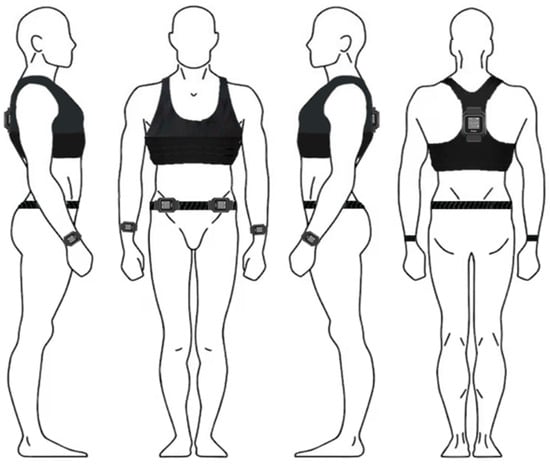
Figure 1
Open AccessReview
Effects of Supervised Strength Training on Physical Fitness in Children and Adolescents: A Systematic Review and Meta-Analysis
by
José M. Moreno-Torres, Juan Alfonso García-Roca, Oriol Abellan-Aynes and Alvaro Diaz-Aroca
J. Funct. Morphol. Kinesiol. 2025, 10(2), 162; https://doi.org/10.3390/jfmk10020162 - 6 May 2025
Abstract
Objective: Strength training has gained recognition as an effective method to enhance physical fitness in children and adolescents. Its benefits include improvements in muscular strength, aerobic capacity (VO2max), and motor performance. However, the diversity in training protocols and participant characteristics across
[...] Read more.
Objective: Strength training has gained recognition as an effective method to enhance physical fitness in children and adolescents. Its benefits include improvements in muscular strength, aerobic capacity (VO2max), and motor performance. However, the diversity in training protocols and participant characteristics across studies necessitates a comprehensive synthesis of the evidence. The aim of this paper was to analyse the influence of a strength training programme in young people aged 6 to 16 years on different aspects of physical fitness. Methods: A search was carried out in the EBSCO, Web of Sciences, and Scopus databases. A total of 634 articles were reviewed, and 22 were finally included in the meta-analysis of articles published between 2013 and 2023 in English or Spanish. Twenty-two studies met the inclusion criteria and were assessed using the AXIS and PEDro tools. Standardised mean differences (SMD) and 95% confidence intervals (CI) were calculated. The variables that were most frequently repeated as criteria for evaluating the effectiveness of strength training were the following: (1) strength of the lower/upper body muscles; (2) VO2max; (3) sprint performance. Results: Strength training interventions produced statistically significant improvements in all analysed variables. Most effective programmes lasted between 6 and 12 weeks, with 2–3 sessions per week. VO2max showed the greatest improvement, followed by upper and lower limb strength, and sprint performance. Heterogeneity ranged from low to moderate. Conclusions: Supervised strength training programmes can significantly enhance physical fitness in school-aged children and adolescents. While the included studies varied in design and duration, measurable improvements were commonly observed in interventions lasting at least 6–8 weeks. Future research should explore age- and maturity-related responses through subgroup analyses. Limitations include the exclusion of studies published after 2023 and the wide age range of participants without biological stratification.
Full article
(This article belongs to the Special Issue Optimizing Performance: Training Strategies to Improve Strength, Speed, and Power)
►▼
Show Figures

Figure 1
Open AccessArticle
May Patients with Chronic Stroke Benefit from Robotic Gait Training with an End-Effector? A Case-Control Study
by
Mirjam Bonanno, Paolo De Pasquale, Antonino Lombardo Facciale, Biagio Dauccio, Rosaria De Luca, Angelo Quartarone and Rocco Salvatore Calabrò
J. Funct. Morphol. Kinesiol. 2025, 10(2), 161; https://doi.org/10.3390/jfmk10020161 - 6 May 2025
Abstract
Background: Gait and balance alterations in post-stroke patients are one of the most disabling symptoms that can persist in chronic stages of the disease. In this context, rehabilitation has the fundamental role of promoting functional recovery, mitigating gait and balance deficits, and
[...] Read more.
Background: Gait and balance alterations in post-stroke patients are one of the most disabling symptoms that can persist in chronic stages of the disease. In this context, rehabilitation has the fundamental role of promoting functional recovery, mitigating gait and balance deficits, and preventing falling risk. Robotic end-effector devices, like the G-EO system (e.g., G-EO system, Reha Technology, Olten, Switzerland), can be a useful device to promote gait recovery in patients with chronic stroke. Materials and Methods: Twelve chronic stroke patients were enrolled and evaluated at baseline (T0) and at post-treatment (T1). These patients received forty sessions of robotic gait training (RGT) with the G-EO system (experimental group, EG), for eight weeks consecutively, in addition to standard rehabilitation therapy. The data of these subjects were compared with those coming from a sample of twelve individuals (control group, CG) matched for clinical and demographic features who underwent the same amount of conventional gait training (CGT), in addition to standard rehabilitation therapy. Results: All patients completed the trial, and none reported any side effects either during or following the training. The EG showed significant improvements in balance (p = 0.012) and gait (p = 0.004) functions measured with the Tinetti Scale (TS) after RGT. Both groups (EG and CG) showed significant improvement in functional independence (FIM, p < 0.001). The Fugl-Meyer Assessment—Lower Extremity (FMA-LE) showed significant improvements in motor function (p = 0.001, p = 0.031) and passive range of motion (p = 0.031) in EG. In EG, gait and balance improvements were influenced by session, age, gender, time since injury (TSI), cadence, and velocity (p < 0.05), while CG showed fewer significant effects, mainly for age, TSI, and session. EG showed significantly greater improvements than CG in balance (p = 0.003) and gait (p = 0.05) based on the TS. Conclusions: RGT with end-effectors, like the G-EO system, can be a valuable complementary treatment in neurorehabilitation, even for chronic stroke patients. Our findings suggest that RGT may improve gait, balance, and lower limb motor functions, enhancing motor control and coordination.
Full article
(This article belongs to the Special Issue Posture, Balance, and Gait: Assessment Techniques and Rehabilitation Strategies)
►▼
Show Figures
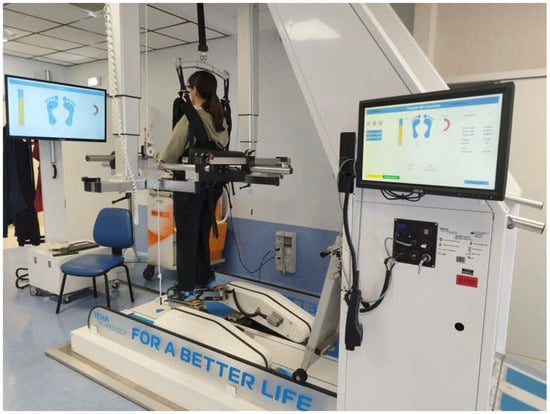
Figure 1
Open AccessArticle
Intra-Session Reliability and Predictive Value of Maximum Voluntary Isometric Contraction for Estimating One-Repetition Maximum in Older Women: A Randomised Split-Sample Study
by
José Aldo Hernández-Murúa, Ena Monserrat Romero-Pérez, Jorge Luis Guajardo-Cruztitla, Blas Sinahí Madrigal Olivares, Ángel Gallego-Selles, Diego González-Martín, Francisca Reyes-Merino, Nidia Sánchez-García and José Antonio de Paz
J. Funct. Morphol. Kinesiol. 2025, 10(2), 160; https://doi.org/10.3390/jfmk10020160 - 6 May 2025
Abstract
Background: Ageing is associated with a progressive decline in muscle strength, particularly in the lower limbs, which compromises functional independence. While both maximum voluntary isometric contraction (MVIC) and one-repetition maximum (1RM) are widely employed to assess muscle strength, the intra-session reliability and predictive
[...] Read more.
Background: Ageing is associated with a progressive decline in muscle strength, particularly in the lower limbs, which compromises functional independence. While both maximum voluntary isometric contraction (MVIC) and one-repetition maximum (1RM) are widely employed to assess muscle strength, the intra-session reliability and predictive capacity of MVIC for estimating 1RM in older women remain insufficiently explored. Objectives: This study aims to evaluate the intra-session reliability of MVIC in knee extensors, analyse its correlation with 1RM, and develop a predictive model for estimating 1RM from MVIC in older women. Methods: Using a randomised split-sample design, 82 women aged 60–69 years performed two MVIC trials and one 1RM test using a leg extension machine. Intra-session reliability was assessed by calculating the intraclass correlation coefficient (ICC), the standard error of measurement (SEM), and the minimal detectable change (MDC). Furthermore, a linear regression model was developed to predict 1RM based on MVIC. Results: MVIC demonstrated excellent intra-session reliability (ICC = 0.96, SEM = 4.3%, MDC = 11.9%), and a strong correlation between MVIC and 1RM was observed (R2 = 0.618). Although the predictive equation 1RM = [(0.932 × MVIC) − 3.852] did not yield statistically significant differences between the estimated and actual 1RM values (p = 0.791), it exhibited a prediction error of 13.4%. Conclusions: MVIC is a highly reliable measure in older women and represents a practical tool for estimating 1RM. Nonetheless, its predictive accuracy is limited, highlighting the need for further studies to refine predictive models by incorporating additional variables.
Full article
(This article belongs to the Special Issue Biomechanical Analysis in Physical Activity and Sports—2nd Edition)
►▼
Show Figures
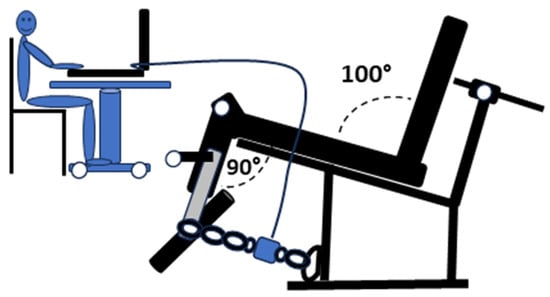
Figure 1
Open AccessArticle
Assessing the Validity and Reliability of the PNO
by
Manny M. Y. Kwok, Shamay S. M. Ng, Jonathan Myers and Billy C. L. So
J. Funct. Morphol. Kinesiol. 2025, 10(2), 159; https://doi.org/10.3390/jfmk10020159 - 6 May 2025
Abstract
Background: The accuracy of measurement of cardiometabolic outcomes in terms of gaseous exchange and energy expenditure of individuals is crucial. The objective of this study was to compare the validity and reliability of the PNO
Background: The accuracy of measurement of cardiometabolic outcomes in terms of gaseous exchange and energy expenditure of individuals is crucial. The objective of this study was to compare the validity and reliability of the PNO
(This article belongs to the Special Issue Basis of Applied Kinesiology, Innovations and Clinical Applications in Musculoskeletal Health)
►▼
Show Figures
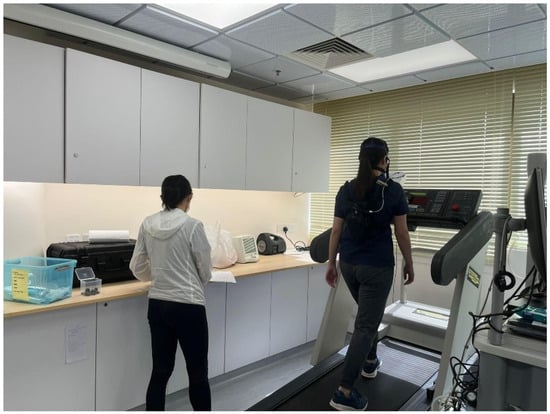
Figure 1
Open AccessArticle
Investigating Countermovement and Horizontal Jump Asymmetry in Female Football Players: Differences Across Age Categories
by
Elena Mainer-Pardos, Rafael Albalad-Aiguabella, Víctor Emilio Villavicencio Álvarez, Santiago Calero-Morales, Demetrio Lozano and Alberto Roso-Moliner
J. Funct. Morphol. Kinesiol. 2025, 10(2), 158; https://doi.org/10.3390/jfmk10020158 - 3 May 2025
Abstract
Background: Lower limb asymmetry is a critical factor influencing performance and injury risk in football players. Despite the increasing popularity of women’s football, limited research has examined how asymmetry varies across different age categories. This study aimed to investigate countermovement jump (CMJ)
[...] Read more.
Background: Lower limb asymmetry is a critical factor influencing performance and injury risk in football players. Despite the increasing popularity of women’s football, limited research has examined how asymmetry varies across different age categories. This study aimed to investigate countermovement jump (CMJ) and horizontal jump (HJ) asymmetry in female football players across four age categories (U14, U16, U18, and +18). Methods: Seventy-six female football players from the same club participated in the study. Players performed unilateral CMJ and HJ tests to assess inter-limb asymmetry. A one-way ANOVA and Chi-square tests were conducted to examine age-related differences in asymmetry levels. Results: CMJ asymmetry significantly varied across age groups (p < 0.001), with the highest asymmetry observed in U14 and the lowest in +18. In contrast, HJ asymmetry remained consistently low across all age groups (p = 0.113). No significant correlation was found between CMJ and HJ asymmetry. Additionally, asymmetry levels in CMJ were significantly associated with age (p = 0.003), whereas no such association was observed for HJ. Conclusions: CMJ asymmetry is more prevalent in younger female football players and tends to decrease with age, suggesting that neuromuscular development plays a role in reducing asymmetry over time. These findings highlight the importance of monitoring asymmetry levels across different age groups to optimize training interventions and injury prevention strategies.
Full article
(This article belongs to the Special Issue Physiological and Biomechanical Foundations of Strength Training)
►▼
Show Figures

Figure 1
Open AccessArticle
Velocity-Based Curve Differential Repeated Sprinting Training: A Novel Approach to Shape Physical Performance in Young Basketball Players
by
Jorge Arede, Jack Wells, Mark Williams, Franc Garcia and Wolfgang Schöllhorn
J. Funct. Morphol. Kinesiol. 2025, 10(2), 157; https://doi.org/10.3390/jfmk10020157 - 3 May 2025
Abstract
Background: Basketball necessitates high-intensity, intermittent efforts with multidirectional and unpredictable movements, requiring training strategies that enhance players’ physical capacity to meet these demands efficiently. This study aimed to examine the effects of a velocity-based curve differential sprinting training on the overall performance of
[...] Read more.
Background: Basketball necessitates high-intensity, intermittent efforts with multidirectional and unpredictable movements, requiring training strategies that enhance players’ physical capacity to meet these demands efficiently. This study aimed to examine the effects of a velocity-based curve differential sprinting training on the overall performance of young male basketball players. Methods: A total of 24 participants were tested for single- and double-legged counter-movement jump (CMJ) height, 10 m linear sprint time, and agility performance in a pre–post–retention test design. The 12-week intervention consisted of two weekly sessions with differential sprint training in addition to normal basketball training. Sessions consisted of two sets of ten 20 m sprints whereby participants were instructed to perform additional fluctuations in joints velocity for each repetition. Results: Results show strong evidence for H1 (significant effect) for the experimental group in CMJ height (right leg) (BF10 = 19.24) between pre-, post-, and retention test values (BF10 = 10.24–17.85). For the remaining variables, no significant differences were observed. In contrast, the control group showed no significant effects including sprinting variables, indicating limited training effects. Conclusions: In conclusion, this research found that the 12-week differential curve sprinting training improved physical performance in the CMJ for the experimental group. Therefore, adding velocity-based random fluctuations during curve sprint training could be an effective training strategy for enhancing jumping performance in youth basketball players, which should encourage practitioners to implement different variations of the differential training approach.
Full article
(This article belongs to the Special Issue Optimizing Performance: Training Strategies to Improve Strength, Speed, and Power)
►▼
Show Figures
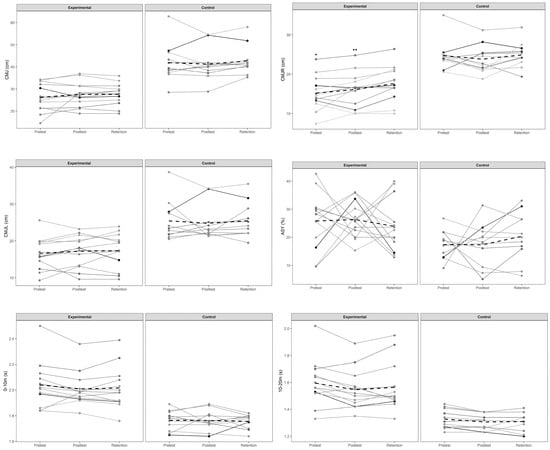
Figure 1
Open AccessArticle
Contribution of Tibialis Anterior in Sit-to-Stand Motion: Implications for Its Role in Shifting the Center of Pressure Backward
by
Hiroki Hanawa, Taku Miyazawa, Keisuke Hirata, Keisuke Kubota and Tsutomu Fujino
J. Funct. Morphol. Kinesiol. 2025, 10(2), 156; https://doi.org/10.3390/jfmk10020156 - 1 May 2025
Abstract
Background: The role of tibialis anterior activity in sit-to-stand motion is unclear. We hypothesized that contraction of the tibialis anterior would slightly lift the forefoot and shift the center of pressure backward. Objectives: The objective of this study was to clarify this movement
[...] Read more.
Background: The role of tibialis anterior activity in sit-to-stand motion is unclear. We hypothesized that contraction of the tibialis anterior would slightly lift the forefoot and shift the center of pressure backward. Objectives: The objective of this study was to clarify this movement and its role in tibialis anterior activity. Methods: Ten healthy adults performed the sit-to-stand motion. Cross-correlation coefficients among tibialis anterior activity, shank inclination angle, and center of pressure were calculated. Whole-body joint moments were simulated when the center of pressure varied within the foot. The angle of the ground reaction force during seat-off was calculated. Results: The center of pressure moved backward in all trials for all participants. The mean lag time for peak cross-correlation coefficients between the tibialis anterior and shank tilt and between the tibialis anterior and center of pressure was 0.37 and 0.13 s, respectively. Simulating the center of pressure forward resulted in greater whole-body joint moments than those measured (mean 1.88 times). The ground reaction forces were nearly perpendicular to the floor. Conclusions: From the perspective of temporal synchrony, tibialis anterior activity significantly contributed to the backward shift of the center of pressure. The center of pressure shift minimized the force exerted by the entire body.
Full article
(This article belongs to the Special Issue Biomechanical Analysis in Physical Activity and Sports—2nd Edition)
►▼
Show Figures
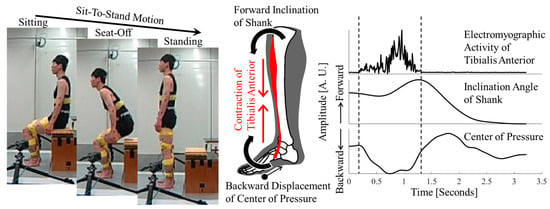
Figure 1
Open AccessArticle
Relationships Between Effort, Rate of Perceived Exertion, and Readiness During a Warm-Up for High-Speed Sprinting
by
Roland van den Tillaar, Nick Ball and Per Øyvind Torvik
J. Funct. Morphol. Kinesiol. 2025, 10(2), 155; https://doi.org/10.3390/jfmk10020155 - 1 May 2025
Abstract
Objectives: The aim of this study was to investigate how a sprint warm-up with increasing prescribed effort relates to actual effort and how this influences RPE and readiness for a maximal 50 m sprint performance. Methods: A total of 19 subjects
[...] Read more.
Objectives: The aim of this study was to investigate how a sprint warm-up with increasing prescribed effort relates to actual effort and how this influences RPE and readiness for a maximal 50 m sprint performance. Methods: A total of 19 subjects (17 men and 2 women age: 43.8 ± 12.6 yrs., height: 1.78 ± 0.08 m, body mass: 78.7 ± 9.5, 100 m PB: 13.07 ± 1.0) undertook a short specific warm-up of 8 × 50 m runs with 60 s rest in between (10 min in total) where a dynamic exercise was performed. The first 50 m run was performed at a self-estimated effort of around 60% of estimated maximal sprint speed. Each subsequent 50 m repetition required a 5% increase in sprint speed until it reached 95% of maximal self-estimated intensity, followed by a maximal 50 m sprint performance. Every 50 m time was measured together with the rating of perceived exertion (RPE) and readiness to perform a maximal 50 m sprint. Results: The main findings were that actual percentage of effort was generally higher than prescribed efforts, especially in the initial test, while alignment improved in the retest, except at higher intensities (80–90%). Furthermore, both RPE and readiness had a significant positive correlation with the percentage of effort, though RPE was consistently lower, and readiness was slightly reduced at lower efforts in the retest. In addition, test–retest reliability indicated consistent sprint performance and perceptual measures across sessions. Conclusions: It was concluded that this short, structured warm-up is suitable for maximal sprint performance as shown by the readiness and RPE.
Full article
(This article belongs to the Section Athletic Training and Human Performance)
►▼
Show Figures
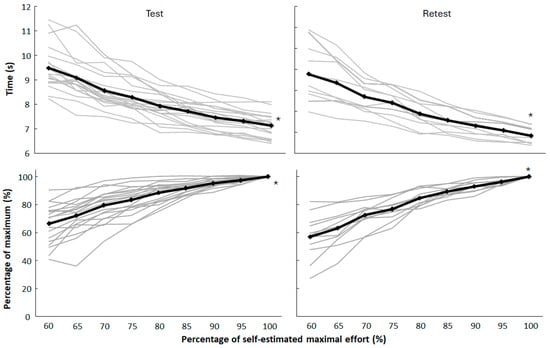
Figure 1
Open AccessArticle
The Predictive Capacity of the 3-Meter Backward Walk Test for Falls in Older Adults: A Case–Control Analysis
by
Luis Polo-Ferrero, Javier Torres-Alonso, María Carmen Sánchez-Sánchez, Ana Silvia Puente-González, Fausto J. Barbero-Iglesias and Roberto Méndez-Sánchez
J. Funct. Morphol. Kinesiol. 2025, 10(2), 154; https://doi.org/10.3390/jfmk10020154 - 30 Apr 2025
Abstract
Background: The early detection of fall risk in older adults is crucial for prevention. This study assessed the 3-Meter Backward Walk Test (3m-BWT) as a predictor of falls. Methods: A retrospective observational case–control study was conducted with 483 community-dwelling participants (mean
[...] Read more.
Background: The early detection of fall risk in older adults is crucial for prevention. This study assessed the 3-Meter Backward Walk Test (3m-BWT) as a predictor of falls. Methods: A retrospective observational case–control study was conducted with 483 community-dwelling participants (mean age 76.3 ± 6.5 years), including 101 individuals with a history of falls in the previous 12 months. A standardized battery of functional assessments was applied. Results: Significant differences were observed between fallers and non-fallers across all functional variables (p < 0.001), with fallers demonstrating slower performance on the 3m-BWT (6.8 ± 3.4 s vs. 5.1 ± 1.3 s). The 3m-BWT showed moderate correlations with Short Physical Performance Battery, 5-repetition Sit-to-Stand, gait speed, and 4-Square Step Test, and a moderate-to-strong correlation with Timed Up-and-Go (r = 0.632), even after adjusting for age, sex, and BMI. Although the 3m-BWT exhibited superior discriminative ability compared to other tests (AUC = 0.655), its predictive power in isolation remains limited. The optimal cut-off point was identified at 5.5 s (sensitivity: 59.5%; specificity: 68.6%), while a threshold of <3.5 s yielded high sensitivity (98%) but low specificity, supporting its use in fall risk screening. Conclusions: These findings support the integration of the 3m-BWT as a complementary tool within comprehensive geriatric assessments, particularly in contexts requiring high sensitivity. Given the multifactorial nature of falls, combining the 3m-BWT with other clinical evaluations and fall history is recommended to enhance risk stratification and inform preventive strategies.
Full article
(This article belongs to the Special Issue Posture, Balance, and Gait: Assessment Techniques and Rehabilitation Strategies)
►▼
Show Figures
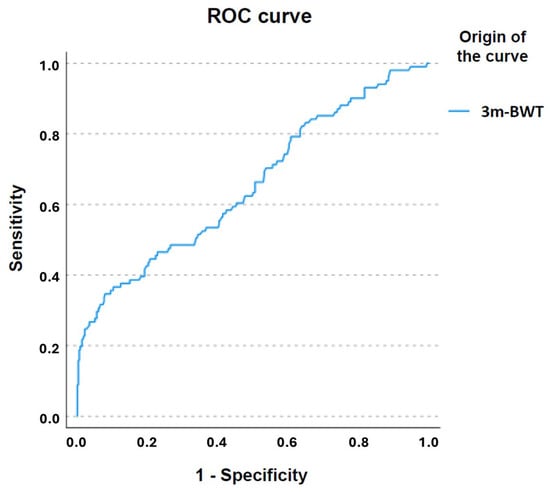
Figure 1
Open AccessArticle
Influence of Biological Maturation on the Career Trajectory of Football Players: Does It Predict Elite Success?
by
Saül Aixa-Requena, Albert Gil-Galve, Alejandro Legaz-Arrese, Vicenç Hernández-González and Joaquín Reverter-Masia
J. Funct. Morphol. Kinesiol. 2025, 10(2), 153; https://doi.org/10.3390/jfmk10020153 - 30 Apr 2025
Abstract
Background: Early-maturing players tend to have physical advantages during formative stages, but it remains unclear whether these advantages translate into long-term professional success. This study examines how biological maturation influences participation and career trajectories in youth football. Methods: Anthropometric and competitive data were
[...] Read more.
Background: Early-maturing players tend to have physical advantages during formative stages, but it remains unclear whether these advantages translate into long-term professional success. This study examines how biological maturation influences participation and career trajectories in youth football. Methods: Anthropometric and competitive data were collected from 47 players (13.53 ± 1.08 years) in a top-tier academy during the 2010–2011 season. The maturation status was assessed using the Tanner–Whitehouse II RUS method, and the career outcomes were tracked in 2024–2025. Results: Early-maturing players showed higher anthropometric values and greater participation. However, late maturers were more likely to reach professional football (p = 0.003), with all players competing in the top five European leagues belonging to the late-maturing group. Conclusions: Early maturation does not guarantee professional success. Strategies such as bio-banding and personalized training can reduce biases and support talent development, highlighting the need for a more holistic approach to player evaluation.
Full article
(This article belongs to the Special Issue New Perspectives on Kinesiology and Functional Morphology in Team Sports)
Open AccessArticle
Executive Function Response to Moderate-to-High-Intensity Rope Skipping in Overweight Adolescents Aged 12–14: A Preliminary Study
by
Qian Yu, Xiaodong Wang and Lin Zhang
J. Funct. Morphol. Kinesiol. 2025, 10(2), 152; https://doi.org/10.3390/jfmk10020152 - 29 Apr 2025
Abstract
Background: Previous studies have shown that a high body mass index (BMI) is detrimental to executive function (EF) in children and elderly populations but may be improved by physical activity (PA). However, research on adolescents aged 12–14 is lacking. This study explores
[...] Read more.
Background: Previous studies have shown that a high body mass index (BMI) is detrimental to executive function (EF) in children and elderly populations but may be improved by physical activity (PA). However, research on adolescents aged 12–14 is lacking. This study explores two parts: Part 1: cross-sectional correlation between BMI and EF; Part 2: the effect of an 8-week rope skipping intervention. Methods: Recruit 166 adolescents to participate in EF tasks. Screen and select 96 adolescents to be assigned to the normal weight control group (N-C, n = 23) and the normal weight exercise group (N-E, n = 23), the overweight control group (OV-C, n = 13), and the overweight exercise group (OV-E, n = 14), the obese control group (OB-C, n = 12), and the obese exercise group (OB-E, n = 11). Exercise program: moderate-to-high-intensity rope skipping training. Control program: Self-directed reading. Data were recorded for BMI and EF tasks. Results: Part 1, EF and BMI exhibit a negative linear correlation. Part 2, the reaction time of EF tasks in N-E, OV-E and OB-E decreased about 9, 14, 13% (p < 0.05), respectively, while the average BMI in OV-E and OB-E decreased about 10% and 11% (p < 0.05), suggesting a potential correlation between the reduction in BMI and the improvement in EF, which means that the exercise intervention significantly improved EF performance. Conclusions: Among adolescents aged 12–14, overweight and obese individuals exhibit weaker EF compared with normal weight individuals. An 8-week moderate-to-high-intensity rope skipping exercise program can improve EF in adolescents aged 12–14 with different BMIs, and the improvement is greater in overweight and obese individuals.
Full article
(This article belongs to the Section Physical Exercise for Health Promotion)
►▼
Show Figures

Figure 1
Open AccessArticle
Positional Differences in Youth Water Polo Players: Cognitive Functions, Specific Swimming Capacities and Anthropometric Characteristics
by
Neven Kovačević, Frane Mihanović, Linda Lušić Kalcina, Tatjana Matijaš and Tea Galić
J. Funct. Morphol. Kinesiol. 2025, 10(2), 151; https://doi.org/10.3390/jfmk10020151 - 28 Apr 2025
Abstract
Objectives: Water polo players ought to possess various physical capacities and well-developed cognitive functions that reflect the requirements of their specific playing position. Therefore, the objective of this study was to compare the cognitive performance, anthropometric characteristics and specific swimming capacities of youth
[...] Read more.
Objectives: Water polo players ought to possess various physical capacities and well-developed cognitive functions that reflect the requirements of their specific playing position. Therefore, the objective of this study was to compare the cognitive performance, anthropometric characteristics and specific swimming capacities of youth water polo players in different playing positions. Methods: The present cross-sectional study involved 106 youth water polo players. The subjects were recruited as part of a project for talent identification and selection for the Croatian National Water Polo Team. Testing included anthropometric measurements, specific swimming capacities and cognitive performance (Stroop test). Results: Among the 106 youth water polo players, there were 15 goalkeepers (14.2%), 21 center-defenders (19.8%), 17 center-forwards (16.0%), 34 drivers (32.1%) and 19 wings (17.9%), with the mean age of 14.14 ± 0.38 years. The wings performed faster than center-forwards in both StroopOff time (wings: 57.14 ± 10.04 s vs. center-forwards: 67.03 ± 9.72 s, p = 0.016) and StroopOn time (wings: 66.18 ± 15.86 s vs. center-forwards: 80.24 ± 15.64 s, p = 0.019). Conclusions: In conclusion, this study demonstrated significant differences between different playing positions in youth water polo players, specifically between center-forwards and wings. They performed faster than center-forwards in all tested variables of the Stroop test, measures of psychomotor ability, response inhibition and motor speed, as well as in specific swimming capacities measured in the 50 m crawl and the 400 m crawl. The results of this study provide a valuable foundation for establishing developmental recommendations for different playing positions, aimed at improving player’s performance. These recommendations should take into account anthropometric characteristics, specific functional swimming capacities and cognitive functions that influence players’ game intelligence, which can be enhanced through properly designed training programs.
Full article
(This article belongs to the Special Issue New Insights into Motor/Cognitive Skills and Sports Performance in Youth Athletes)
Open AccessArticle
Contributions of Medications, Physical and Hydrotherapy Programs in Reducing Endothelial Dysfunction in Hypertensive Patients
by
Roxana Cristina Rad Bodan, Adina Octavia Dușe, Eniko Gabriela Papp, Răzvan Marian Melinte and Minodora Andor
J. Funct. Morphol. Kinesiol. 2025, 10(2), 150; https://doi.org/10.3390/jfmk10020150 - 28 Apr 2025
Abstract
Background: Hypertension is in first place in Europe among cardiovascular diseases. Worldwide, only 1 in 5 adults pursue proper treatment that controls their high blood pressure. Endothelial dysfunction is a marker that indicates the progression of hypertension. The study aims to evaluate
[...] Read more.
Background: Hypertension is in first place in Europe among cardiovascular diseases. Worldwide, only 1 in 5 adults pursue proper treatment that controls their high blood pressure. Endothelial dysfunction is a marker that indicates the progression of hypertension. The study aims to evaluate the efficacy of antihypertensives and physical and hydrotherapy cardiovascular rehabilitation programs to control hypertension and improve endothelial dysfunction. Methods: A total of 100 patients with hypertension degree 1 (46 years ± 0.32) were divided into four homogenic groups. All subjects of the A, B, C and D groups benefited from recommendations for a healthy lifestyle; groups B, C and D also received antihypertensive medication; additionally, group C had a physical cardiovascular program and group D a cardiovascular hydrotherapy program. Several clinical endothelial damage markers and blood and urine parameters were registered, along with systolic and diastolic blood pressure, before and after 8 weeks of rehabilitation. Results: Group A registered a statistically significant decrease for 1 parameter LDL (p = 0.002). Group B showed statistically significant values for 14 parameters (p ≤ 0.05). The C and D groups registered significantly improved statistic values for 17 parameters each (p ≤ 0.0001). Conclusions: Groups B, C and D that were given antihypertensive medication during rehabilitation registered improved endothelial dysfunctional markers and controlled blood pressure values, compared with group A which was given only recommendations for a healthy lifestyle.
Full article
(This article belongs to the Special Issue Advances in Physiology of Training—2nd Edition)
►▼
Show Figures
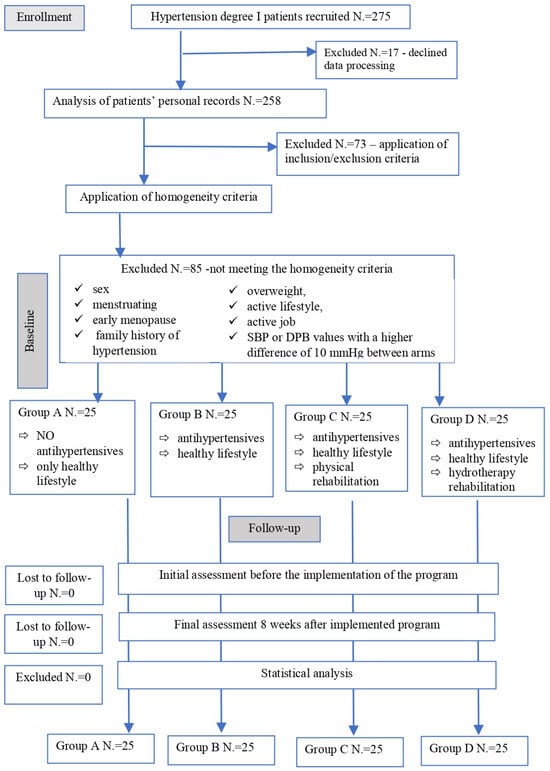
Figure 1
Open AccessArticle
The Coracohumeral Ligament and Its Fascicles: An Anatomic Study
by
Emilio González-Arnay, Isabel Pérez-Santos, Camino Braojos-Rodríguez, Artimes García-Parra, Elena Bañón-Boulet, Noé Liria-Martín, Lidia Real-Yanes and Mario Fajardo-Pérez
J. Funct. Morphol. Kinesiol. 2025, 10(2), 149; https://doi.org/10.3390/jfmk10020149 - 27 Apr 2025
Abstract
Background: The coracohumeral ligament (CHL) is inserted in the coracoid process, from which it extends laterally and caudally, blending with the tendinous insertions of the subscapularis muscle and the supraspinatus muscle, with a third intermediate area between the muscles inserted between the humeral
[...] Read more.
Background: The coracohumeral ligament (CHL) is inserted in the coracoid process, from which it extends laterally and caudally, blending with the tendinous insertions of the subscapularis muscle and the supraspinatus muscle, with a third intermediate area between the muscles inserted between the humeral tubercles, and it contributes to the fibrous tunnel that engulfs the long head of the biceps tendon. Most previous studies mention insertions from the base of the coracoid process, but not from the tip, and some authors describe anterior and posterior columns. In contrast, others stress the existence of superficial and deep fascicles. Also, the relationship between the coracohumeral and the glenohumeral ligaments is unclear. Given the position of the CHL covering most of the rotator interval, and its role in the stability of the shoulder capsule and pathologies like frozen shoulder, a clear description of its fascicles in a plane-wise manner might be helpful for a selective surgical approach. Methods: We studied sixteen soft-embalmed shoulders to avoid misclassifying fascicles due to formalin-linked tissue amalgamation. Further histological assessment was performed on the two remaining non-embalmed shoulders. Results: In our sample, the coracohumeral ligament hung from the anterior and posterior edges of the coracoid process’ inferior surface, defining two columns that converged near the tip of the coracoid process. Both columns were formed by superficial and deep fascicles directed to different depths of the rotator cuff, usually via the rotator interval, fusing with the connective tissue around the muscles without direct distal attachments. We performed histological and morphometrical assessments, and we discuss clinical and biomechanical implications. Conclusions: The coracohumeral ligament contains four fascicles that fuse with the connective tissue of the shoulder joint, forming a double necklace around the subscapularis and supraspinatus. Therefore, its functions probably extend beyond simple vertical stabilization.
Full article
(This article belongs to the Section Functional Anatomy and Musculoskeletal System)
►▼
Show Figures
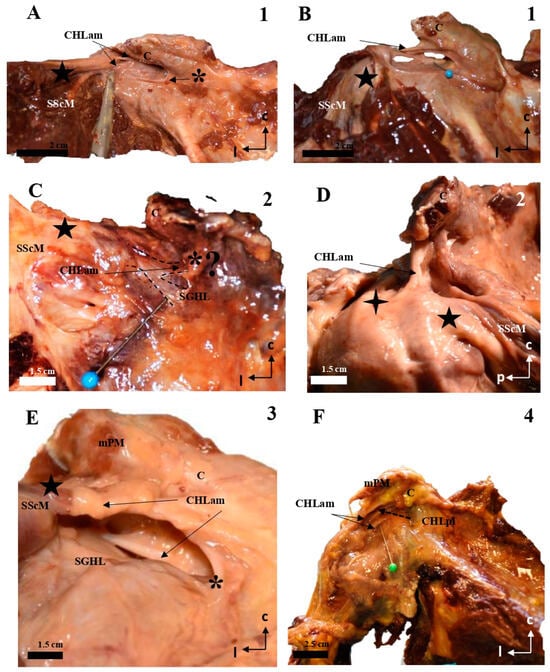
Figure 1
Highly Accessed Articles
Latest Books
E-Mail Alert
News
Topics
Topic in
Behavioral Sciences, Children, Healthcare, IJERPH, JFMK, Obesities
The Effect of Physical Activity on the Population's Health
Topic Editors: Stefania Paduano, Federica ValerianiDeadline: 31 July 2025
Topic in
Applied Sciences, JFMK, Sports, Children
Movement and Health: Holistic Development to Support Long-Term Active Lifestyles
Topic Editors: Francesco Sgrò, David StoddenDeadline: 31 December 2025
Topic in
Biomechanics, JFMK, Sports
Concurrent Strength and Endurance Training
Topic Editors: Alejandro Pérez-Castilla, Manuel A. Rodríguez PérezDeadline: 28 February 2026
Topic in
JFMK, Medicina, Therapeutics, Healthcare, JCM, Rheumato
New Trends in Physiotherapy Care: Improvements in Functionality, Pain Management, and Quality of Life
Topic Editors: Carlos Bernal-Utrera, Ernesto Anarte-Lazo, Juan José González GerezDeadline: 3 March 2026

Conferences
Special Issues
Special Issue in
JFMK
Physiological Adaptations and Improvements in Sports Performance through Training in Adverse Environments
Guest Editor: Ismael GuardadoDeadline: 30 May 2025
Special Issue in
JFMK
Basis of Applied Kinesiology, Innovations and Clinical Applications in Musculoskeletal Health
Guest Editor: Vicente Javier Clemente SuárezDeadline: 30 May 2025
Special Issue in
JFMK
Advances in Kinanthropometry: Techniques and Applications in Sports and Health
Guest Editors: Stefania Toselli, Luciana Zaccagni, Natascia RinaldoDeadline: 31 May 2025
Special Issue in
JFMK
New Perspectives on Kinesiology and Functional Morphology in Team Sports
Guest Editors: Łukasz Rydzik, Michał Spieszny, Tadeusz AmbrozyDeadline: 31 May 2025
Topical Collections
Topical Collection in
JFMK
Feature Papers in Journal of Functional Morphology and KinesiologyCollection Editor: Giuseppe Musumeci







